Toenail problems images. Toenail Color Changes: What They Reveal About Your Health
What can different toenail colors indicate about your health. How to identify potential nail problems early. When should you see a doctor for toenail discoloration.
Black Toenails: Causes and When to Seek Medical Attention
Black toenails are often a cause for concern, but in many cases, they’re harmless. The most common reason for a black toenail is a subungual hematoma – essentially a bruise under the nail. This typically occurs due to trauma, such as stubbing your toe or wearing ill-fitting shoes that compress your toes.
How does a subungual hematoma develop?
When you injure your toe, blood vessels beneath the nail can rupture, causing blood to pool and clot. This process follows a distinctive color progression:
- Red
- Purple
- Dark brown
- Black
If you’ve experienced a minor injury, you can usually wait for the black nail to grow out naturally. This process typically takes 6 to 9 months, sometimes longer.
When to See a Doctor for a Black Toenail
While most black toenails are benign, there are instances where medical attention is necessary. Seek professional advice if:
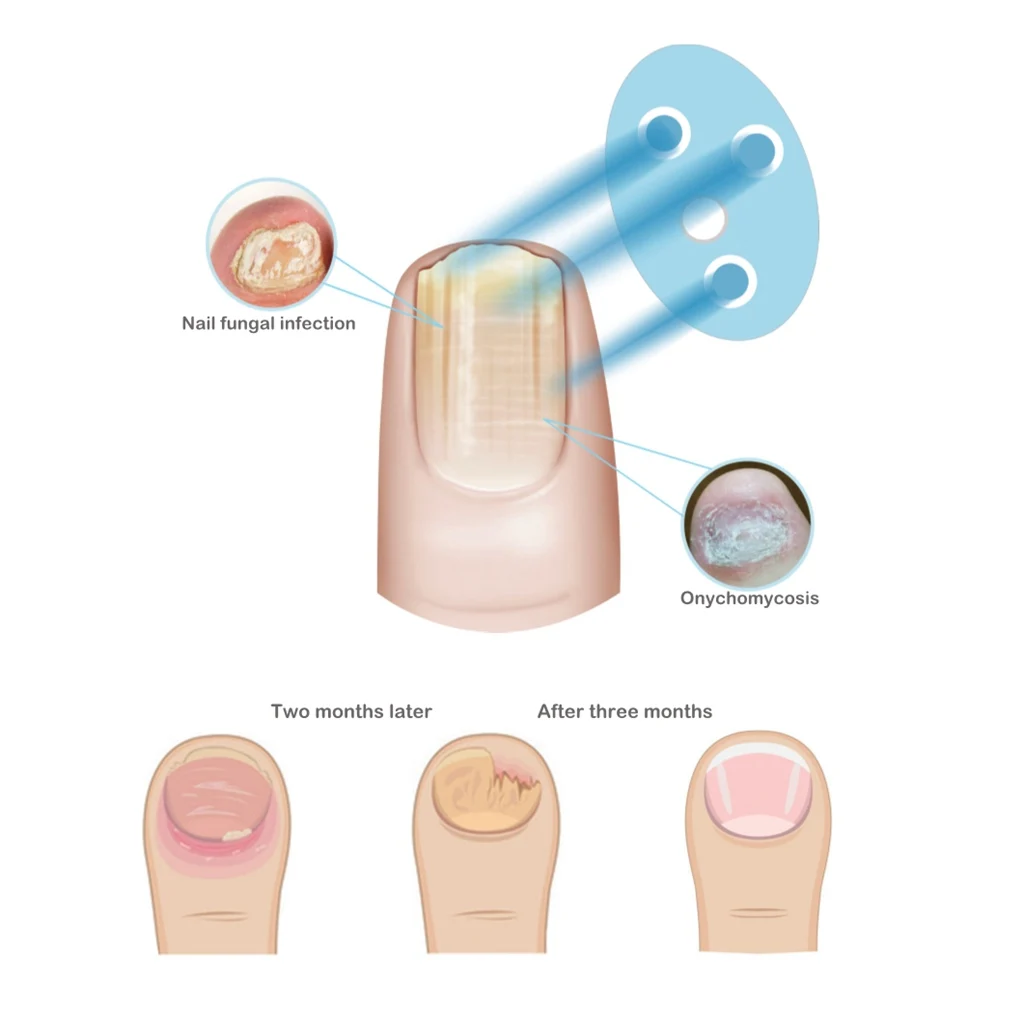
- You haven’t experienced any recent toe trauma
- Your footwear isn’t causing compression
- The discoloration persists or spreads
In rare cases, a black toenail could indicate more serious conditions, including:
- Malignant melanoma (a serious form of skin cancer)
- Fungal infections
- Chronic ingrown nails
- Other underlying health issues
Yellow Toenails: Fungal Infections and Treatment Options
Yellow toenails are often a telltale sign of a fungal infection. These infections are remarkably common and, in many cases, can be treated without a doctor’s intervention.
How can you treat yellow toenails at home?
For mild cases of fungal infections causing yellow toenails, try these steps:
- Apply an over-the-counter antifungal cream to the affected nail
- If the nail is thick, gently file down the surface to allow better penetration of the medication
- Be consistent with treatment, as fungal infections can be persistent
If home remedies prove ineffective after a few weeks, it’s time to consult a healthcare professional. They may prescribe stronger antifungal medications or recommend additional treatments.
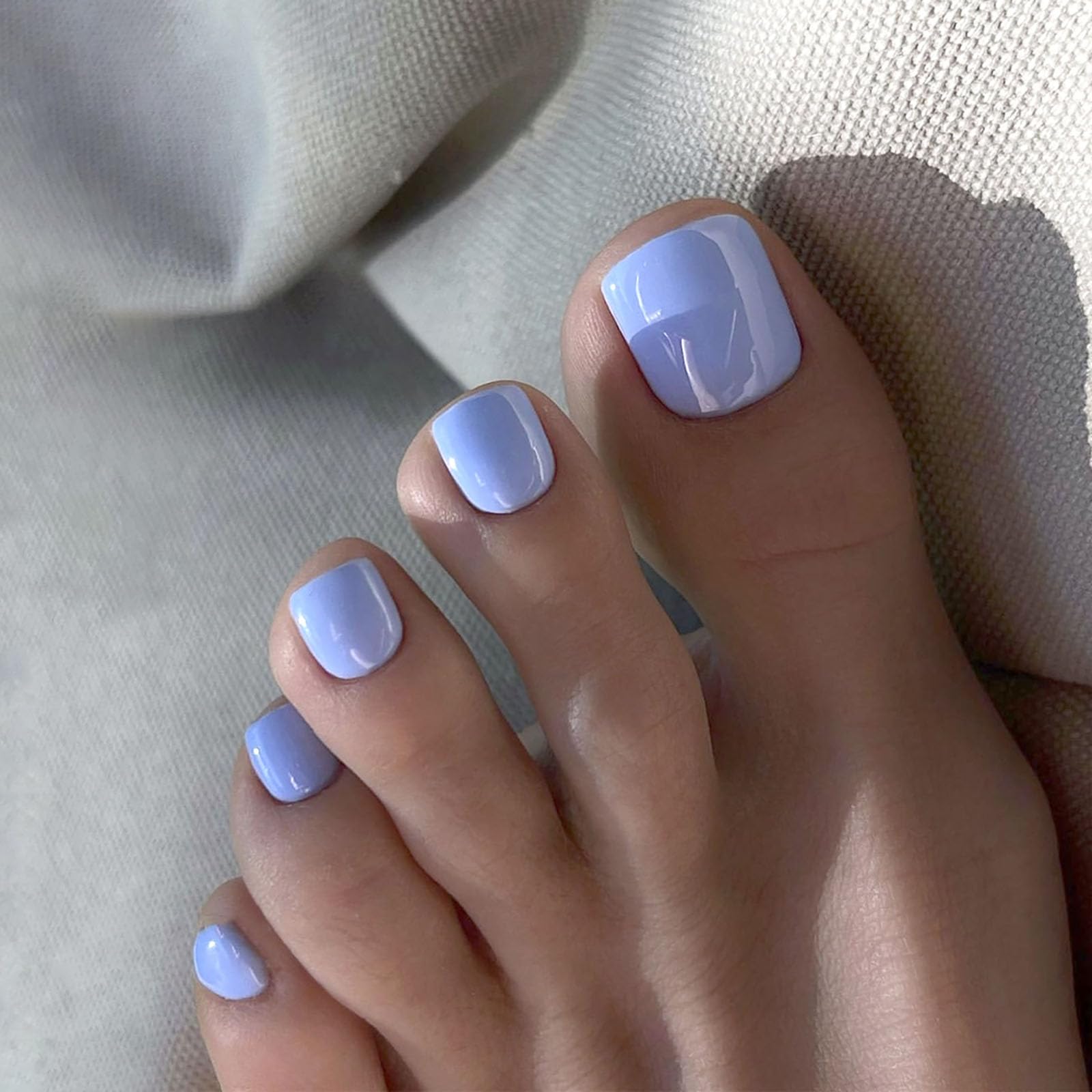
Green Toenails: An Unusual Sign of Bacterial Infection
Green toenails, while uncommon, are a distinctive sign that shouldn’t be ignored. This condition, known as green-nail syndrome or chloronychia, is typically caused by a bacterial infection.
What causes green-nail syndrome?
The primary culprits behind green toenails are bacteria that thrive in damp or wet environments. Common sources include:
- Hot tubs
- Damp sponges
- Prolonged use of tight-fitting shoes
It’s important to note that the green color is underneath the nail, not a surface discoloration. Don’t attempt to scrub it away, as this won’t address the underlying infection. Instead, seek medical attention for proper diagnosis and treatment.
Blue Toenails: When to Be Concerned
A blue toenail following an injury is usually not cause for alarm. However, if you notice a blue spot or toenail discoloration without any apparent cause, it’s advisable to consult a doctor.
What could a blue spot under the toenail indicate?
In many cases, a blue spot beneath the nail is a benign condition called a blue nevus – essentially a type of mole. While usually harmless, there is a rare possibility that a specific type of blue mole, known as a cellular blue nevus, could become cancerous.
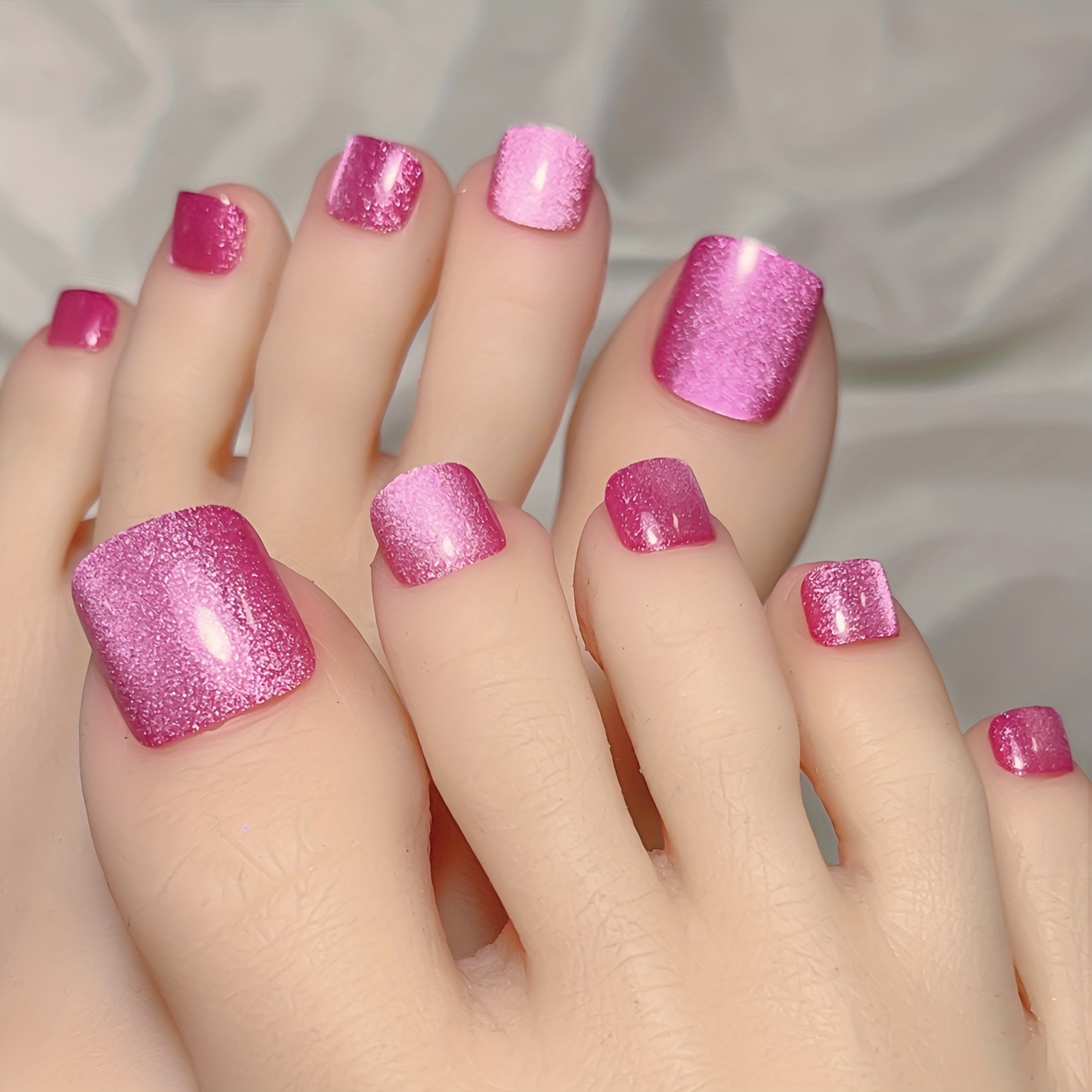
To ensure your health and peace of mind, it’s best to have any unexplained blue discoloration on your toenails evaluated by a medical professional.
White Toenails: Trauma, Fungal Infections, and Other Causes
White spots or patches on toenails can have various causes, ranging from minor trauma to fungal infections. Understanding the different presentations can help determine the appropriate course of action.
White Spots from Trauma
Sometimes, stubbing your toe doesn’t result in a bruise but instead causes a white spot on the nail. Unlike a bruise, this spot won’t disappear but will grow out with the nail over time.
What causes white streaks on toenails?
White streaks can also be the result of repeated minor trauma, often from ill-fitting shoes. For instance, if your sneakers are too small and your toes consistently hit the front of the shoe, it can lead to these distinctive white marks.
White Patches: Signs of Fungal Infection
If you notice large, powder-like white patches on your toenails, you may be dealing with a fungal infection. The most common culprit is white superficial onychomycosis.

Why is early treatment important for white superficial onychomycosis?
This type of infection can spread across the entire toenail if left untreated. As it progresses, it can cause the nail to become rough and crumbly. Early intervention is key to preventing extensive damage to the nail.
Proximal Subungual Onychomycosis
Another type of fungal infection that can cause white discoloration is proximal subungual onychomycosis. This condition presents as a whitish or yellowish patch starting at the base of the toenail, near the cuticle.
Who is at risk for proximal subungual onychomycosis?
This particular infection is rare in healthy individuals. It’s more commonly seen in people with weakened immune systems and can sometimes be an indicator of HIV. If you notice this type of discoloration, especially if you have any risk factors, it’s crucial to seek medical attention promptly.
Red and White Striped Toenails: A Sign of Underlying Conditions
Toenails featuring red and white stripes are often indicative of problems elsewhere in the body. These distinctive lines, sometimes accompanied by V-shaped nicks, are a hallmark of Darier disease.
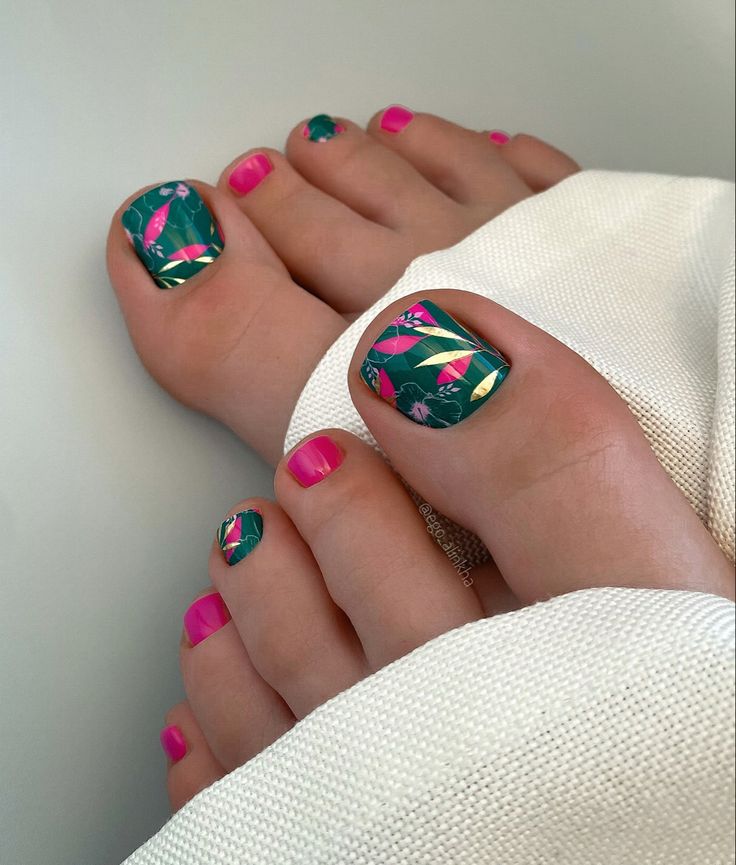
What is Darier disease?
Darier disease is an inherited condition that primarily affects the skin. It’s characterized by:
- Greasy, warty skin lesions
- Foul-smelling blemishes
- Distinctive nail changes, including red and white stripes
If you notice these unique nail patterns, especially in conjunction with skin issues, it’s important to consult a dermatologist for proper diagnosis and management.
Brown Toenails: Melanonychia and Its Various Causes
Brown discoloration on toenails, medically termed melanonychia, can range from light brown to nearly black. It typically appears as a line or streak running vertically along the nail.
What are the potential causes of brown toenail streaks?
Brown streaks on toenails can have various origins, including:
- Injury to the nail or surrounding tissue
- Melanoma (a serious form of skin cancer)
- Inflammatory conditions affecting the nail bed
- Fungal infections
- Side effects from certain medications
Given the range of possible causes, including some potentially serious conditions, it’s advisable to have any persistent brown streaks on your toenails evaluated by a healthcare professional.

The Importance of Regular Toenail Checks
While it’s easy to overlook our toenails, regular inspection can provide valuable insights into our overall health. By familiarizing yourself with your nails’ normal appearance, you’ll be better equipped to notice any changes early on.
How often should you examine your toenails?
Aim to check your toenails at least once a month. Look for any changes in color, texture, or shape. If you notice anything unusual, don’t hesitate to consult a healthcare provider. Remember, early detection and treatment can often prevent more serious complications down the line.
By staying vigilant and understanding what different toenail colors and changes might indicate, you’re taking an important step in maintaining your overall health and well-being. Your toenails might seem like a small part of your body, but they can offer significant clues about your health status. Don’t neglect them – they deserve your attention and care.
Pictures of Toenail Colors and What They Mean
Medically Reviewed by Dany Paul Baby, MD on June 26, 2022
Whether you’re washing your hands or admiring a manicure, you spend a lot more time looking at your fingernails than your toenails. Maybe it’s time to focus on your feet more often (and not just during sandal season). Toenail color changes — from a big blue spot to a thin brown line — could signal health problems. Here’s what you need to know.
If your toenail turns black, it’s most likely a bruise under the nail, technically called a subungual hematoma. You can get it from stubbing a toe or from footwear that cram your feet into the front of the shoe. The bruise usually starts out red, then becomes purple, dark brown, and finally black when blood beneath the nail pools and clots. Expect your black toenail to grow out in about 6 to 9 months or longer.
Say you’re not a runner, your shoes are roomy, and you’re sure you haven’t hurt your toe — yet you have one or more black toenails. Check to see if it’s just that dye has rubbed off from a pair of shoes. If not, head to the doctor. You might have a rare cause of black toenail, such as:
Check to see if it’s just that dye has rubbed off from a pair of shoes. If not, head to the doctor. You might have a rare cause of black toenail, such as:
- Malignant melanoma, a serious form of skin cancer
- Fungal infection
- Chronic ingrown nail
- Other health problems
When toenails turn yellow, a fungus is usually to blame. This type of fungal infection is so common that you might not even need to see a doctor for treatment. Try an over-the-counter antifungal cream. If your nail is yellow and thick, gently file down the surface so that the drug can reach deeper layers. If at-home treatment doesn’t work, a doctor visit is in order.
Unless you’re wearing green nail polish, this is a color you don’t want to see on your toenails. It could be green-nail syndrome (chloronychia), which is caused by an infection. The culprit is usually bacteria that thrive in damp or wet conditions. Think hot tubs, sponges, even tight-fitting shoes that you’ve worn for a long time.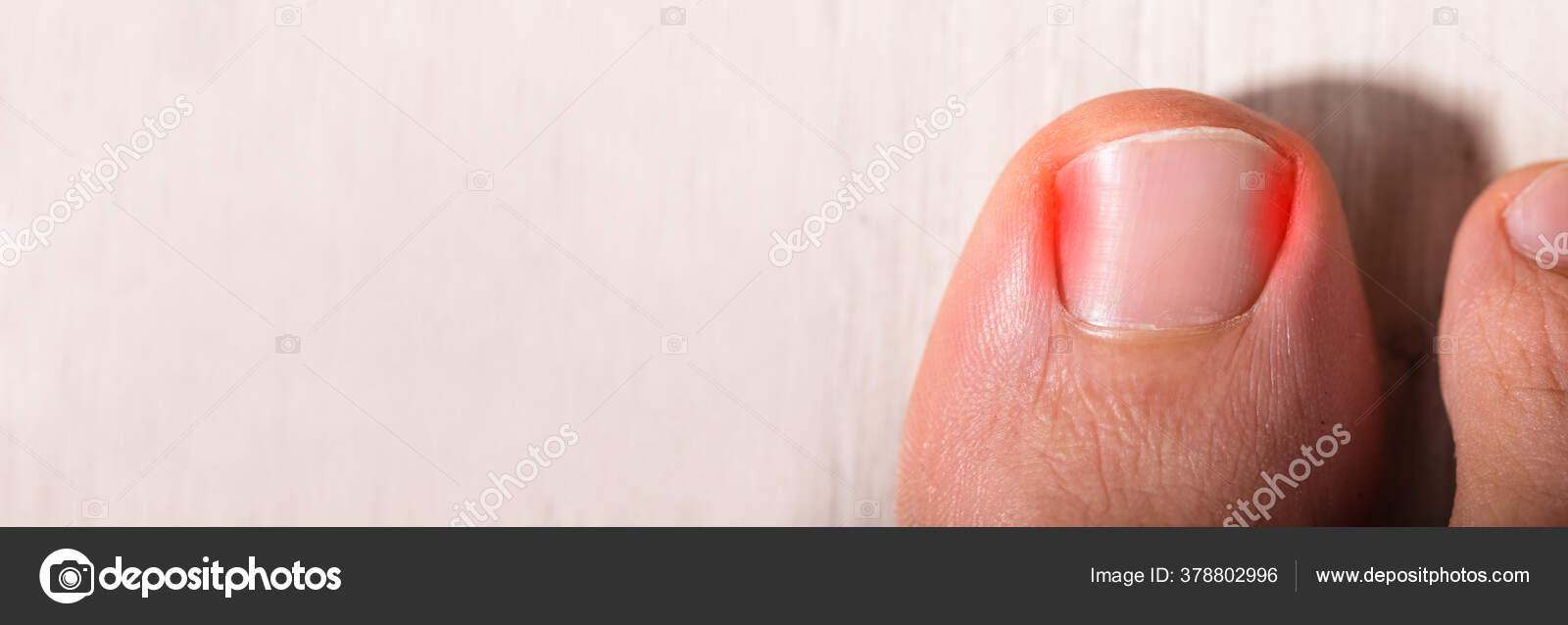 The color is underneath the nail, so don’t try to scrub it off. Visit your doctor instead.
The color is underneath the nail, so don’t try to scrub it off. Visit your doctor instead.
If you stub your toe and it turns blue, you might not think twice about the color. But if you get a blue spot or a blue toenail for no clear reason, play it safe and see a doctor. You may have a blue mole beneath the nail. It’s probably harmless. But in very rare cases, a type of blue mole called a cellular blue nevus can become cancer.
Stubbing your toe doesn’t always lead to a bruise. That’s because the blood vessels under the nail might not break and leak blood. Instead, you might get a white spot on your toenail. It won’t don’t disappear like a bruise, but it will grow out in time. Toe trauma can also cause a white streak — though you might not know you hurt yourself. For example, it can happen when sneakers are too small and your toe hits the front of the shoe.
Do you have a toenail that’s turned white, or has large powder-like patches? You could have a fungal infection, most likely one called white superficial onychomycosis.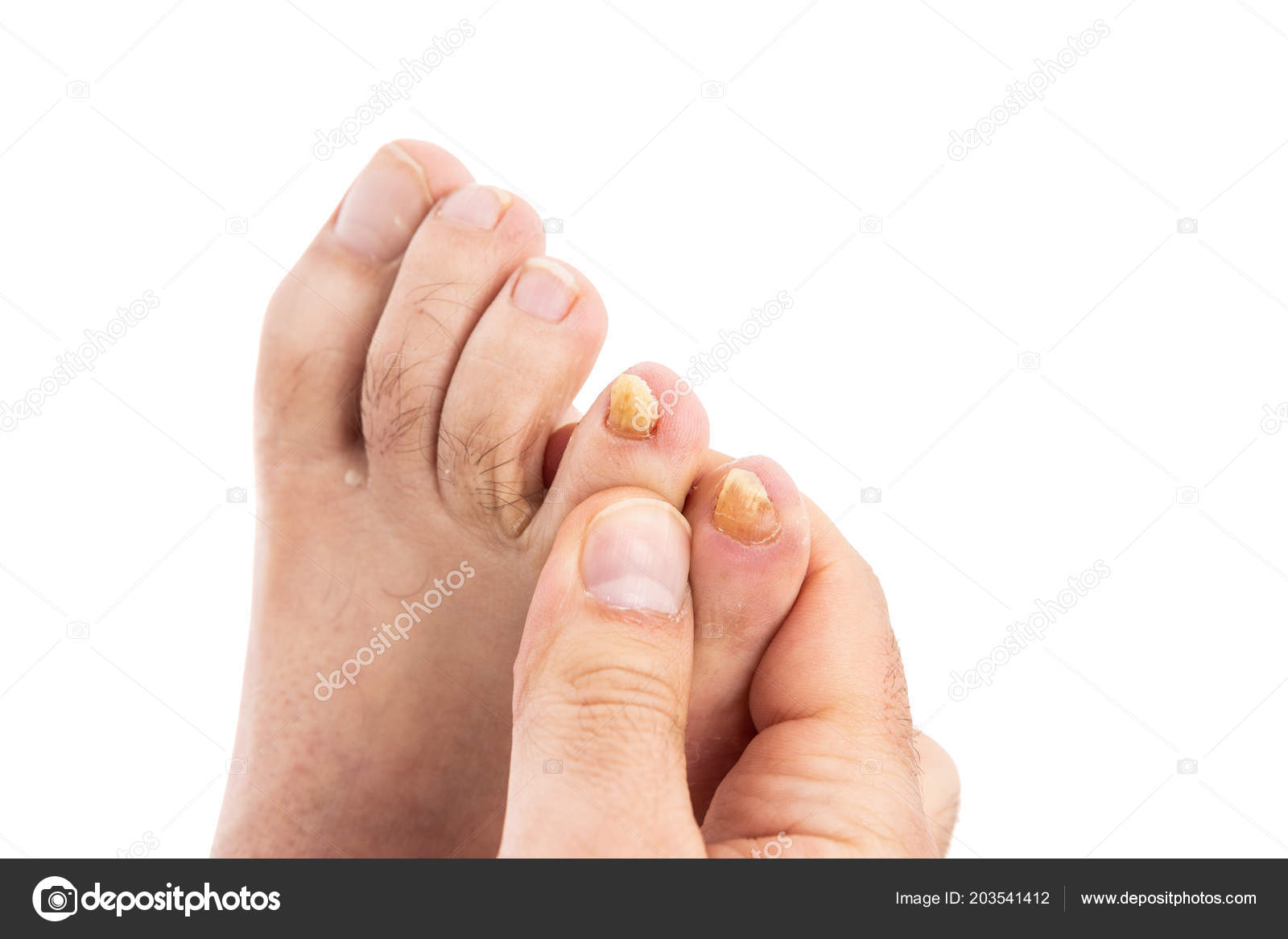 If possible, see a doctor as soon as you notice it. This infection spreads across the toenail. White superficial onychomycosis can cause the entire nail to become rough and crumbly.
If possible, see a doctor as soon as you notice it. This infection spreads across the toenail. White superficial onychomycosis can cause the entire nail to become rough and crumbly.
Another type of fungal infection is called proximal subungual onychomycosis. It looks like a whitish or yellowish patch that starts at the base of the toenail, near the cuticle. The infection is rare in healthy people. More often, it happens in people with weakened immune systems. It can also be a sign of HIV.
When toenails have red and white stripes, there are usually problems elsewhere on your body. These lines and V-shaped nicks are a hallmark of Darier disease. It’s an inherited disease, mostly affecting the skin and causing greasy, warty, foul-smelling blemishes.
The term for brown and sometimes black color on your toenail is melanonychia. Brown usually appears as a line or streak going up and down the nail. Possible causes:
- Injury
- Melanoma
- Inflammatory conditions
- Fungal infections
- Certain medications
Because there’s a small chance your brown toenail streak could be a sign of something serious, play it safe and get checked out.
IMAGES PROVIDED BY:
1) Daiva Boguckiene / EyeEm / Getty Images
2) amesy / Getty Images
3) Manuel Faba Ortega / Thinkstock
4) SandroSalomon / Thinkstock
5) benstevens / Thinkstock
6) poco_bw / Thinkstock
7) RoniMeshulamAbramovitz / Thinkstock
8) ISM / Medical Images
9) Gary Ombler / Getty Images
10) Bhownit Singh / EyeEm / Getty Images
11) DR P. MARAZZI / Science Source
SOURCES:
American Osteopathic College of Dermatology: “Green Nail Syndrome,” “Subungual Hematoma.”
The Australian Journal of Dermatology: “Subungual and periungual congenital blue naevus.”
American College of Foot and Ankle Surgeons: “White Toenails,” “Black Toenails.”
American Family Physician: “Treating Onychomycosis.”
U.S. National Library of Medicine: “Darier disease.”
Mayo Clinic: “Nail fungus.”
Medscape: “Melanonychia.”
© 2022 WebMD, LLC. All rights reserved. View privacy policy and trust info
Ways to Make Your Feet Feel Better
Medically Reviewed by Stephanie S.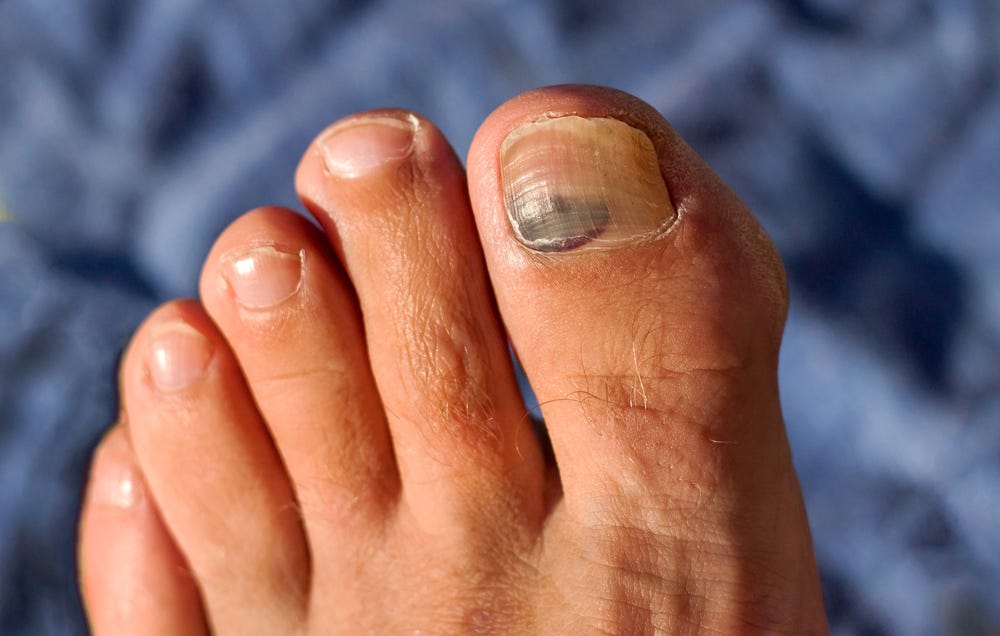 Gardner, MD on November 22, 2022
Gardner, MD on November 22, 2022
They’re easy to take for granted, but it’s hard to get anywhere without them. And when they hurt, it can be tough to concentrate on anything else. So pamper your feet to keep them at their best.
Your feet take a beating every day, and small problems can turn into big ones if you ignore them. Look over your feet each day for cuts, sores, loose or discolored toenails, swelling, or rashes.
When you’re walking, they’re working — and they sweat, too. When the cracks and crevices between your toes are trapped in your shoes, they’re a warm, moist place that’s ideal for fungus. And that can lead to things like athlete’s foot. When you wash your feet, the water shouldn’t be too hot — between 90 and 95 degrees is best — and don’t forget to get between your toes.
This may seem obvious, but many people don’t dry their feet the right way. It’s not just the tops and bottoms: You should get between your toes — where fungus is most likely to cause problems.
After you dry your feet, sprinkle cornstarch or talcum powder on them to help keep them dry. If you have athlete’s foot or some other infection, you can try special medicated foot powders that help with itching, too.
It may feel good at the time, but soaking your feet for long periods can lead to dry, cracked skin that can cause pain, sores, and even infection. Wash, dry, powder, and repeat — and leave it at that. Save the soaking for your beans.
Lotion, cream, petroleum jelly — whatever moisturizer you prefer — put a thin coat of it on the tops and bottoms of your feet. Make sure to rub it all the way in and skip between your toes, where too much moisture can cause trouble.
You want to cut them straight across. You can smooth the corners with an emery board or nail file, but don’t angle them. That can cause your toenails to grow into your skin, which is painful and can lead to infection. Have a foot doctor trim them if you can’t see, reach, or feel your feet, or your toenails are thick, yellowed, or grown into your skin.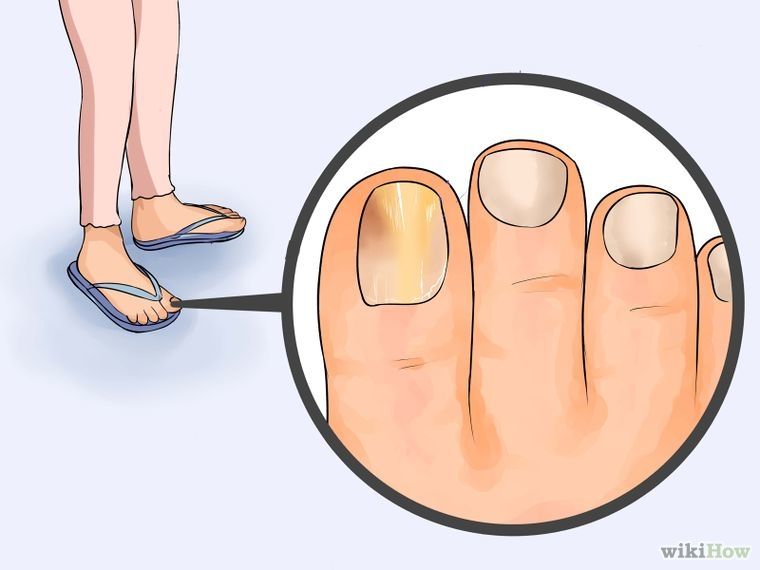
Wiggle your toes a couple of times a day for 5 minutes at a time. Move your ankles around to help even more. Don’t cross your legs for long periods or wear tight socks — that can mess with your blood flow.
Foot stretches and massage — with a ball or roller — are good for your feet and can help manage painful conditions like plantar fasciitis, an injury to the sole of your foot that comes from overuse. Talk to your doctor or physical therapist about which stretches are right for you.
You can use a special kind of stone called pumice on these. After you bathe or shower, rub the stone gently over the area. Don’t cut them or use corn plasters, “liquid corn,” or callus removers — they can cause infection. If you have this done as part of a pedicure at a salon, make sure the footbaths and tools are clean and that the technician washes their hands between clients.
When you need a new pair, it’s best to try them on at the end of the day, when your feet are largest. Make sure that there’s plenty of room for your toes and that they fit when you get them — don’t expect them to “stretch out.” And as pretty as they are, high heels and shoes with pointed toes are really hard on your feet.
Make sure that there’s plenty of room for your toes and that they fit when you get them — don’t expect them to “stretch out.” And as pretty as they are, high heels and shoes with pointed toes are really hard on your feet.
Just a few minutes of activity a day can help your blood flow, which can lead to healthier feet. You don’t have to run a marathon, unless you really want to. Walking, biking, swimming, dancing — even gardening — will work. Get the right kind of supportive shoes for your activity, and ask your doctor if you’re not sure what’s right for you.
Keep your feet safe from the hot pavement in the summer with sandals or shoes, and protect them from sunburn. Many people overlook the top of their feet when they put on sunscreen, but that’s a common place to get a burn. In the cold of winter, lined boots are your feet’s best friend.
It’s even more important to take care of your feet if you have diabetes, especially if you have pain, numbness, changes in the shape of your feet, or sores that don’t heal.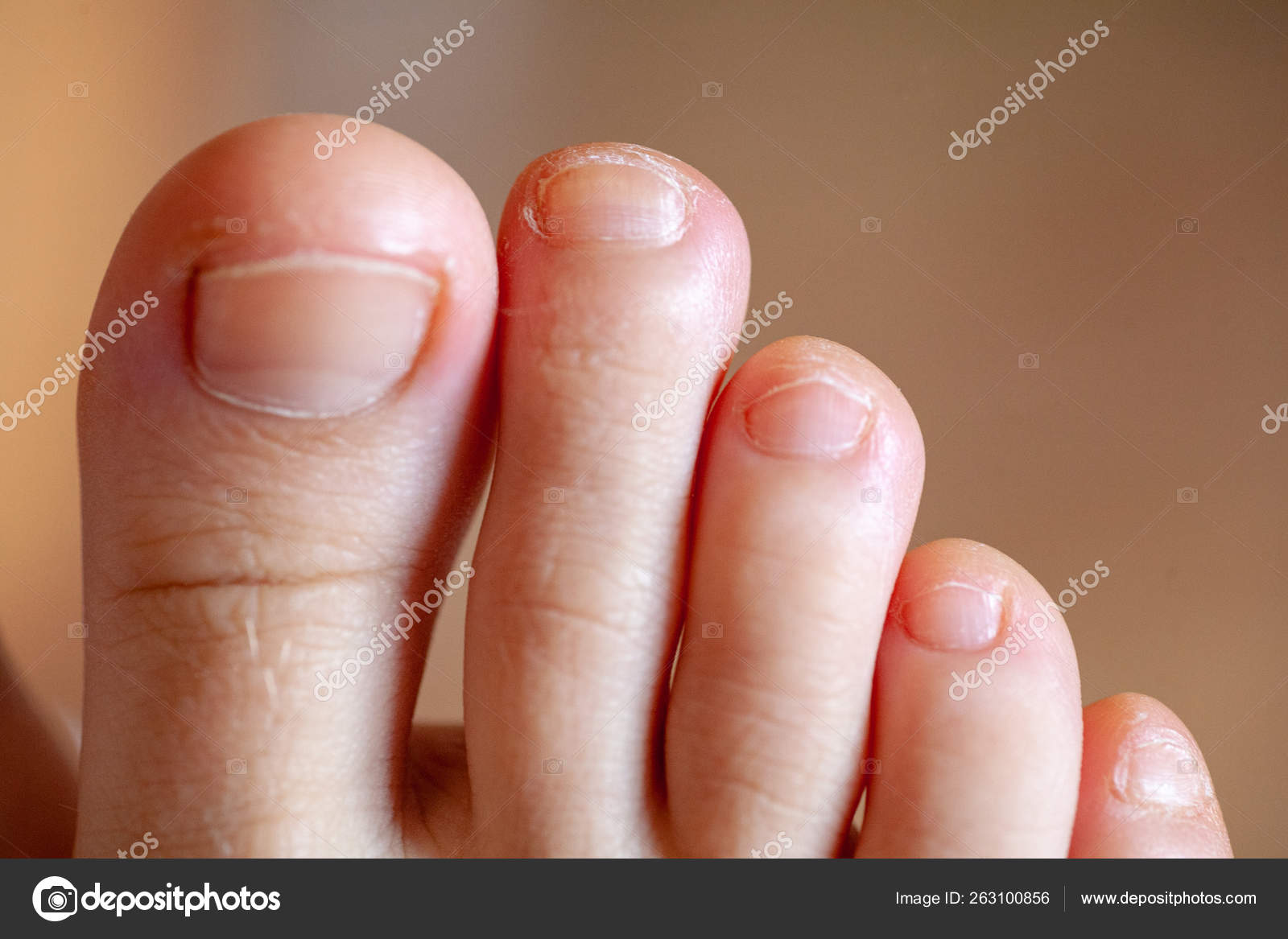 The condition lowers blood flow and can damage nerves in your feet. You may need to talk with a foot doctor — a podiatrist — to make sure you’re doing all you can for them.
The condition lowers blood flow and can damage nerves in your feet. You may need to talk with a foot doctor — a podiatrist — to make sure you’re doing all you can for them.
IMAGES PROVIDED BY:
1) Yobro10 / Thinkstock
2) AndreyPopov / Thinkstock
3) offstocker / Thinkstock
4) Dorling Kindersley / Getty Images
5) Donald Iain Smith / Getty Images
6) ColorBlind Images / Thinkstock
7) AndreyPopov / Thinkstock
8) Manuel-F-O / Thinkstock
9) KharitonovaTatiana / Thinkstock
10) WebMD
11) Anthony-Masterson / Getty Images
12) Gavin Kingcome Photography / Getty Images
13) ipopba / Thinkstock
14) Deagreez / Thinkstock
15) BELMONTE / age fotostock
SOURCES:
American Academy of Dermatology: “Manicure and pedicure safety.”
American Orthopaedic Foot & Ankle Society: “Plantar Fasciitis.”
National Institutes of Health: “Plantar Fasciitis: A Concise Review,” “Blistex Odor Eaters Medicated Foot – menthol, unspecified form powder,” “Take Care of Your Feet for a Lifetime. ”
”
CDC: “Living with Diabetes: Keep Your Feet Healthy.”
Silverman Ankle and Foot: “Sunburnt Feet: Treatment and Prevention.”
© 2022 WebMD, LLC. All rights reserved. View privacy policy and trust info
90,000 methods of determination, methods of treatment, photos of diseased nails.
The most unpleasant thing that can happen to our nails is their disease. Nails lose their appearance, change shape, color, and sometimes the consequences can be much worse. The section presents the most well-known and common nail diseases, their brief overview, as well as methods of treatment and prevention.
Nail diseases
Author: Tanusha
Views: 227
Nail fungus, or onychomycosis, is a common disease that can affect both fingernails and toenails. It causes changes in the structure and appearance of the nail plate, such as staining, roughness, brittleness and change in the shape of the nails. Nail fungus can be not only a cosmetic defect, but also cause discomfort, pain and limit normal activities.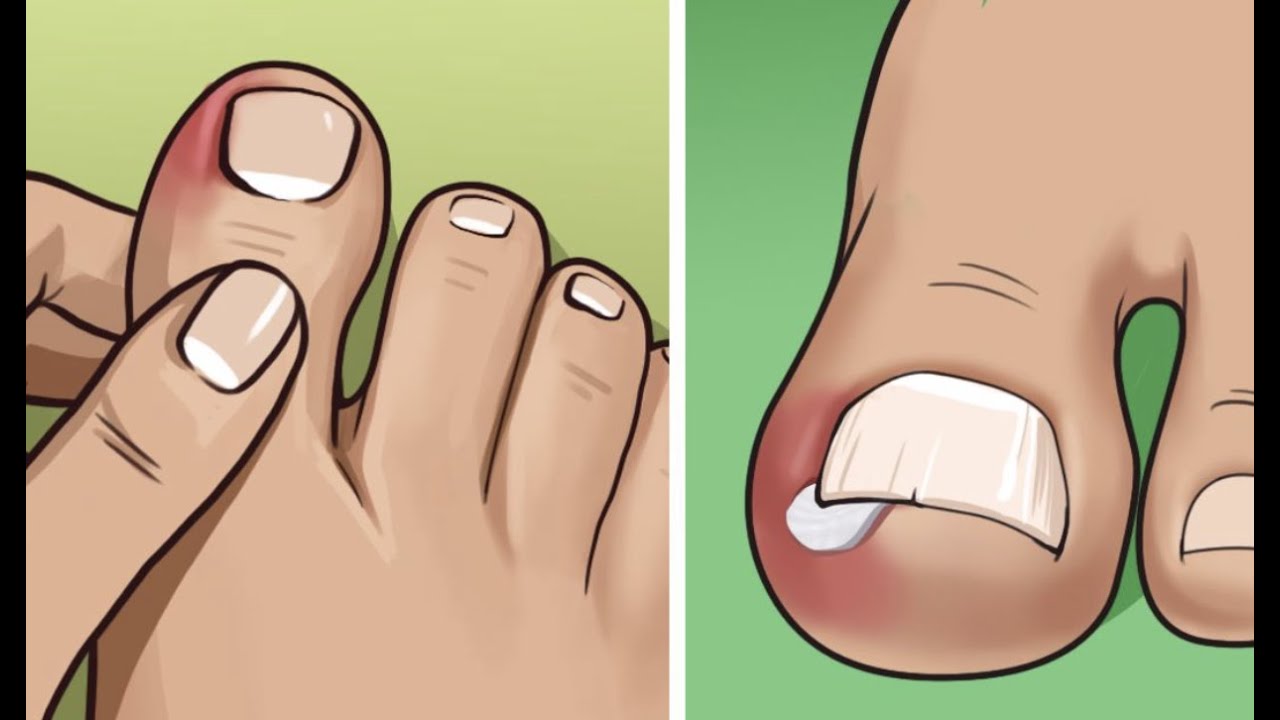
Read more
Share:
Reading time: 1 minutes
Nail diseases
Author: Tanusha
Views: 15,938
In this article I want to raise not the most pleasant topic, which, however, many girls face – an allergy to gel polish. It can manifest itself in different ways: on the fingers, nails or hands, and also, like any other allergy, cause swelling of the eyes, tears, nasal discharge, etc. Therefore, further, all about the symptoms and manifestations of allergies after gel polish, causes and treatment.
Read more
Share:
Reading time: 1 minutes
Nail diseases
Author: Tanusha
Views: 28,094
Nowadays, every second woman complains about problems with her nails. Brittleness, dryness, foliation – all these problems are quite common, and it is quite possible to cope with their elimination at home, unlike fungal diseases, ingrown nails, for the treatment of which you need to contact specialists.
Read more
Share:
Reading time: 1 minutes
Nail diseases
Author: Tanusha
Views: 108,100
A bruised nail can happen to anyone and is a fairly common injury on both hands and feet. But here the degree of its severity can differ significantly. You can just pinch your finger, or maybe a heavy object will fall on it or someone will step on your foot – there are many traumatic situations and no one can completely insure against them. But here’s what to do in such a situation, when not a single day is tormented by pain, you should know.
Read more
Share:
Reading time: 1 minutes
Nail diseases
Author: Tanusha
Views: 27,258
Epidermophytosis is a fungal disease of the nails, often also found on the feet, hands and in the groin. We will talk exclusively about nail disease: risk groups, symptoms of the disease, diagnosis and treatment methods. Athlete’s nails occurs in 25% of the population aged 40-60 years, while the occurrence of this disease in children and adolescents under 18 is extremely rare. In this case, the disease can become chronic.
Athlete’s nails occurs in 25% of the population aged 40-60 years, while the occurrence of this disease in children and adolescents under 18 is extremely rare. In this case, the disease can become chronic.
Read more
Share:
Reading time: 1 minutes
Nail diseases
Author: Tanusha
Views: 56,336
Disease is the worst thing that can happen to our nails. That is why it is necessary, if possible, to follow the rules of nail care and, of course, the rules of hygiene. It would also be nice to know what can happen to the nails in order to be able to prevent the onset of the disease, and at the first sign of it, know what to do. In this article, I want to talk about another disease that sometimes affects the nails – eczema. Surely, you have heard this name, but how does it look on the nails, how does it appear? About everything in order.
Read more
Share:
Reading time: 1 minutes
Nail diseases
Author: Tanusha
Views: 72,982
Candidiasis is the general name for the infection of various parts of the body by yeast fungi of the species Candida . They are quite common in the environment and can cause the development of a fungal infection. Depending on the affected area, various types of this disease are distinguished: candidiasis of the skin, lungs, digestive system, mucous membrane, internal organs, and others. We are also interested in candidiasis of the nails and periungual ridges, its causes, symptoms and treatment.
They are quite common in the environment and can cause the development of a fungal infection. Depending on the affected area, various types of this disease are distinguished: candidiasis of the skin, lungs, digestive system, mucous membrane, internal organs, and others. We are also interested in candidiasis of the nails and periungual ridges, its causes, symptoms and treatment.
Like most diseases, nail candidiasis develops gradually. In this regard, it is customary to distinguish three main stages of the course of this nail disease:
Read more
Share:
Reading time: 1 minutes
Views: 59,441
There is no such person who can boast that he does not have bad habits. Nail biting or Onychophagia is a fairly common problem. It begins in childhood, at the age of 4 or a little later, and can drag on for many years. And when you get older, then you begin to understand how ugly and unhygienic it is. Therefore, now I propose to talk about how you can eradicate this bad habit, forgetting about how many problems it gave you.
Read more
Share:
Reading time: 1 minute
Nail diseases
Author: Tanusha
Views: 78,781
Everyone has repeatedly heard about such a disease as a fungal nail infection and its terrible consequences. Fungus is an infectious disease that is quite common in all countries of the world, is caused by pathogenic fungi and causes a lot of inconvenience, and is also very easily transmitted. The most common fungus of the foot and toenails, since it is there that there are the most favorable conditions for its development. According to statistics, every fifth person in the world suffers from this disease! The disease is easily transmitted, so it is very important to observe the rules of personal hygiene, especially if one of your relatives is infected. It has also been found that it becomes easier to “pick up” a fungal nail infection with age. And a special risk group is patients with varicose and other vascular diseases of the legs.
Read more
Share:
Reading time: 1 minutes
Nail diseases
Author: Tanusha
Views: 51,479
Such nail pathology as ingrown nail is quite widespread. Most often, this manifests itself on the big toes due to various factors. In this case, a lot of problems can arise, starting with a banal inconvenience and ending with gangrene in the most advanced cases. The problem is quite serious, so I decided to dwell in more detail on the causes of its occurrence, stages of development and, of course, methods of treatment.
Read more
Share:
Reading time: 1 minutes
Page 1 of 3123»
Photo speaker of client recovery – PODOLAB Podology Center
Skip to content
90 002 In this section you can see photos before and after the end of the restoration of healthy nails and skin of the feet of our clients
The specialists of the center will professionally and painlessly process the nail plates and skin on the legs and arms using modern equipment.
